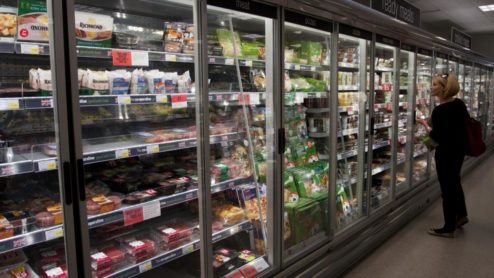The more we heat up, the more we cool down with tech driving global warming – we must break the cycle
The world is getting hotter and keeping cool in an age of climate change is going to become an ever-greater priority for human health and development.
Artificial cooling, from refrigerators to air-conditioning, is necessary to store and transport vaccines and medicines, to keep food fresh, for human productivity and comfort and for many industrial processes.
But here’s the problem – as climate change advances and the world gets hotter, the cooling technology we commonly use today will only make the problem far worse and drive even more warming.
Most cooling equipment not only uses huge amounts of electricity, often from dirty fossil fuel power plants, it also relies on super-polluting refrigerant gases.
Hydrofluorocarbons (HFCs) are the most commonly used refrigerants in air conditioners, supermarket fridges, data centres and refrigerated trucks – but they’re short-lived and have high global warming potentials (GWPs), meaning they further heat up the planet whenever they leak from equipment or are thrown away.
To spell out the problem and point to possible solutions, our Climate team has created a new infographic – check it out below – with some essential information about HFCs, showing the role they play in our everyday lives.
The more we heat up, the more we need to keep cool – but the more we keep cool with HFCs, the more we heat up. The number of air-conditioners in use around the world is expected to triple by 2050 and we need to break this vicious cycle to avoid locking in inefficient equipment using climate-damaging refrigerants.
Fortunately, alternatives exist – natural refrigerants such as carbon dioxide, ammonia and hydrocarbons have very low GWPs and can even improve the efficiency of equipment as well, meaning lower bills by doing the right thing for the planet!
Sophie Geoghegan, EIA Climate Campaigner, said: “International treaties such as the Montreal Protocol’s Kigali Amendment and regional legislation are phasing down the use of HFCs but we need to move much, much faster if we’re to be in with a chance of keeping warming below 1.5°C or even 2°C.
“All of us need to rethink how we keep cool in a climate-friendly, accessible and affordable way. This can be done by avoiding the need for cooling in the first place, through better city and building design, by shifting cooling to new integrated technologies that don’t rely on fossil fuel-generated electricity and through improving the stock of cooling equipment currently available by eliminating HFCs and achieving better energy efficiency.”





